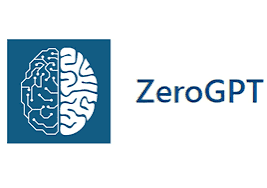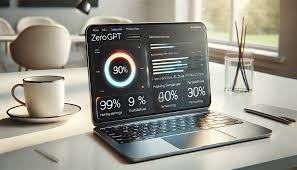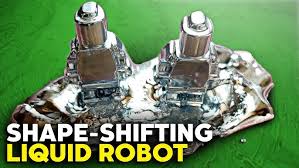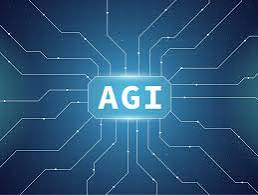 ZeroGPT is an AI detection tool. It is designed to identify text which is generated by artificial intelligence models like ChatGPT. It is widely or through out used relating to different fields of life. Such as by educators, researchers, and businesses to differentiate between human written and AI generated content.
ZeroGPT is an AI detection tool. It is designed to identify text which is generated by artificial intelligence models like ChatGPT. It is widely or through out used relating to different fields of life. Such as by educators, researchers, and businesses to differentiate between human written and AI generated content.Introduction to ZeroGPT
ZeroGPT is a tool of AI. It is designed to detect AI generated text. It helps users to identify any content. It describes content was written by a human or it is produced by AI models like ChatGPT and others. With the rise of AI generated content, there is a growing demand for detection tools. It is especially need in academia, publishing, and content verification.
The purpose of ZeroGPT is to ensure transparency in writing. It assists in different actions. It verify authorship, prevent AI generated plagiarism, and maintain authenticity in digital communication. While AI can produce high quality content.
Some institutions and industries require a way to distinguish between human and AI writing.
This essay will explore how ZeroGPT works, its features, accuracy, applications, limitations, and its impact on the future of AI detection.
How ZeroGPT Works
ZeroGPT uses machine learning algorithms to analyze text and determine whether it was written by AI. It examines multiple factors, including word choice, sentence structure, and predictability. The detection process involves the following steps:
1. Text Input: The user pastes or uploads text into the ZeroGPT platform.
2. Linguistic Analysis: The system analyzes the writing style, coherence, and sentence complexity.
3. Probability Calculation: ZeroGPT assigns a probability score indicating the likelihood of AI involvement.
4. Final Classification: Based on its analysis, the tool labels the text as “AI-generated,” “Human-written,” or “Mixed.”
Detection Methods Used by ZeroGPT
Perplexity Analysis: Measures how predictable a sequence of words is. AI-generated text tends to be more uniform, while human writing has greater variation.
Burstiness: Analyzes sentence complexity and variation. AI tends to write in a consistent manner, whereas humans mix short and long sentences.
Contextual Patterns: Examines patterns in word usage and grammar. AI often follows predictable patterns, while human writing has more natural variation.
Statistical Models: ZeroGPT compares the input text with large datasets of known AI and human writing samples to identify similarities.
By combining these techniques, ZeroGPT estimates whether a text is AI-generated with a certain level of confidence.
Key Features of ZeroGPT
ZeroGPT offers several features that make it a popular choice for AI detection:
1. AI Probability Score
ZeroGPT provides a percentage score indicating how likely a text is AI-generated.
The score ranges from 0% (definitely human-written) to 100% (fully AI-generated).
2. Detailed Reports
The tool highlights specific sections of the text that appear AI-generated.
It provides insights into why certain parts were flagged as AI-written.
3. Multilingual Support
ZeroGPT can analyze text in multiple languages.
This is useful for global users who need AI detection in different languages.
4. Bulk Analysis
Users can upload multiple documents for analysis at once.
This feature is helpful for educators and organizations that need to check large amounts of content.
5. API Integration
ZeroGPT offers an API for developers to integrate AI detection into their own platforms.
This allows businesses to automate AI detection in their workflows.
6. User Friendly Interface
This platform is easy to use, with a simple text input box and get clear results.
Even non technical users can quickly analyze text.
These features make ZeroGPT a powerful tool for identifying AI-generated content.
Accuracy and Reliability of ZeroGPT
1. Accuracy Rates
ZeroGPT claims high accuracy in detecting AI-generated text. However, the effectiveness depends on various factors:
1. The version of the AI model used to generate the text.
2. The length and complexity of the input text.
3. The training data used by ZeroGPT.
In general, ZeroGPT performs well for standard AI-generated text but may struggle with highly edited or mixed content.
2. False Positives, False Negatives
False Positives: It refers to fully human written text. That is mistakenly classified as AI generated.
False Negatives: AI generated text that is incorrectly classified as human written.
False positives can be problematic for students, writers, and professionals. They may be unfairly accused of using AI. False negatives may allow AI generated content to go undetected.
3. Comparison with Other AI Detectors
ZeroGPT competes with other AI detection tools. Some tools are OpenAI’s AI Classifier, Turnitin AI Detector, and GPTZero etc. Each tool has its own strengths and weaknesses, but ZeroGPT is known for its user friendly interface. It also gives detailed reports and results.
No AI detection tool is 100% accurate, despite its strength. Users should interpret results with caution and use additional verification methods when need or necessary.
Applications of ZeroGPT
ZeroGPT is used in various industries and scenarios:
1. Academia
Teachers and professors use ZeroGPT to detect AI-generated essays and assignments.
Universities may implement AI detection to prevent academic dishonesty.
2. Journalism
Media organizations use ZeroGPT to verify the authenticity of articles and reports.
Ensures that human journalists, rather than AI, produce original content.
3. Content Creation
Businesses use ZeroGPT to ensure that content is original and not AI-generated.
Writers and editors use it to check if content has been overly influenced by AI tools.
4. Legal and Compliance
Some industries require human-authored content for regulatory reasons.
ZeroGPT helps verify compliance with such regulations.
5. Social Media and Online Platforms
Platforms use AI detection to prevent spam and AI-generated misinformation.
ZeroGPT helps identify fake news and AI-generated propaganda.
These applications demonstrate the growing importance of AI detection in various fields.
Limitations of ZeroGPT
Despite its usefulness, ZeroGPT has several limitations:
1. Inaccuracy in Short Texts
ZeroGPT works best with longer texts.
Short sentences may not provide enough data for accurate detection.
2. Adaptability of AI Models
As AI models improve, they produce more human-like text.
Detection tools like ZeroGPT must constantly update their algorithms.
3. Editing and Paraphrasing
AI-generated text that has been edited by a human may evade detection.
Paraphrased content can sometimes bypass AI detectors.
4. Ethical Concerns
Over-reliance on AI detection can lead to unfair accusations.
Some educators and employers may penalize users based on unreliable results.
5. Language Limitations
While ZeroGPT supports multiple languages, its accuracy varies.
Some languages may have higher false positive or false negative rates.
Despite these limitations, ZeroGPT remains a valuable tool for AI detection.
The Future of AI Detection and ZeroGPT
As AI technology evolves, AI detection tools must improve as well. The future of ZeroGPT and AI detection includes:
1. Improved Algorithms
Future AI detectors will use more advanced linguistic models.
Increased accuracy will reduce false positives and negatives.
2. AI-Watermarking
AI developers may introduce invisible watermarks in AI-generated text.
Detection tools like ZeroGPT could integrate watermark detection.
3. Hybrid Detection Approaches
Combining AI detection with other verification methods (e.g., metadata analysis).
Human reviewers may work alongside AI tools for better accuracy.
4. Legal and Ethical Frameworks
Governments and organizations may introduce regulations for AI detection.
AI-generated content disclosure may become a legal requirement.
5. AI vs. AI Arms Race
As AI gets better at mimicking human writingwriting. AI detectors must also improve.
This ongoing battle will shape the future of digital content verification.
Conclusion
ZeroGPT is a crucial tool in the modern digital landscape, helping users identify AI-generated content. It provides valuable features like AI probability scoring, multilingual support, and detailed analysis. However, it is not perfect false positives, false negatives, and evolving AI models of present challenges.
Despite its limitations, ZeroGPT plays an important role in academia, journalism, content creation, and regulatory compliance etc. As AI technology advances. The need for reliable AI detection will only grow. Future developments will focus on improving accuracy, integrating, watermarking, and establishing ethical guidelines.
UltimatelyUltimately ZeroGPT is part of a larger effort, that maintain authenticity and trust in the age of artificial intelligence.













